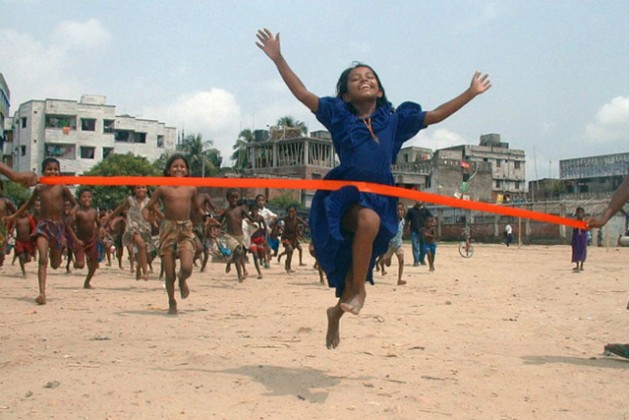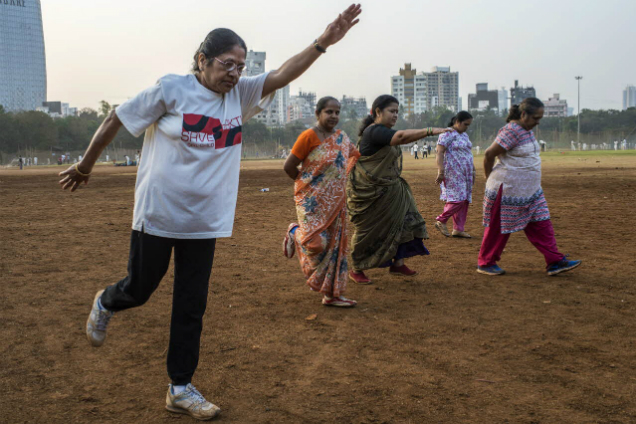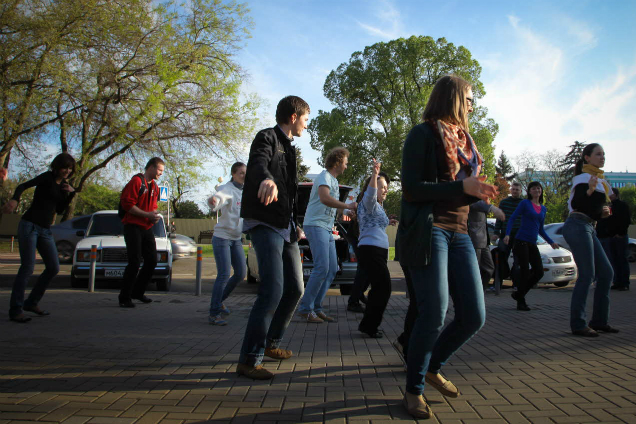Want to Prevent Stroke, Diabetes, Cancer? Get Moving… Now!
HEALTH, 6 Feb 2017
Baher Kamal – Inter Press Service-IPS
2 Feb 2017 – Tired, lazy, bored, laying down long hours watching TV or seated checking your email? Wrong. And dangerous: not enough exercise contributes to cancer, diabetes, depression and other non-communicable diseases.
The warning is bold and comes from the United Nations top health organisation, which is urging people to get up and get active.
And the risks of inactivity are expanding alarmingly: according to a new document by the World Health Organization (WHO), less and less people are active in many countries – with nearly a quarter of all adults and more than 80 per cent of adolescents being too sedentary.
WHO’s Global Action Plan for the Prevention and Control of NCDs [Non-Communicable Diseases] 2013-2020 recommends that inactive people start with “small amounts of physical activity” and then gradually increase duration, frequency and intensity over time.
“Physical activity can be any activity –not just sport– that uses energy… from playing and doing household chores to gardening and dancing… Any activity, be it for work, to walk or cycle to and from places, or as part of leisure time, has a health benefit,” according to the Geneva-based UN agency.
Not really sure? See these 10 facts that the United Nations top health agency has prepared:
Fact 1: Physical Activity Reduces Risk of Disease
Physical activity reduces the risk of coronary heart disease and stroke, diabetes, hypertension, various types of cancer including colon cancer and breast cancer, as well as depression.
Physical activity is also fundamental to energy balance and weight control. Globally, about 23 per cent of adults and 81 per cent of school-going adolescents are not active enough. Generally, women and girls are less active than men and boys, and older adults are less active than younger adults.
Fact 2: It Helps to Maintain a Healthy Body
People who are physically active:
- improve their muscular and cardio-respiratory fitness;
- improve their bone and functional health;
- have lower rates of coronary heart disease, high blood pressure, stroke, diabetes, cancer (including colon and breast cancer), and depression;
- have a lower risk of falling and of hip or vertebral fractures; and
- are more likely to maintain their weight.
Fact 3: It Is Not the Same as Sport
Physical activity is any bodily movement produced by the skeletal muscles that uses energy. This includes sports, exercise, and other activities such as playing, walking, household chores, gardening, and dancing.
Any activity, be it for work, to walk or cycle to and from places, or as part of leisure time, has a health benefit.
Fact 4: Moderate, Vigorous Physical Activity Bring Benefits
Intensity refers to the rate at which the activity is being performed. It can be thought of as how hard a person works to do an activity. The intensity of different forms of physical activity varies between people.
Depending on an individual’s relative level of fitness, examples of moderate physical activity could include: brisk walking, dancing, or household chores.
Examples of vigorous physical activity could be: running, fast cycling, fast swimming, or moving heavy loads.
Fact 5: 60 Minutes a Day for People 5–17 Years Old
People aged 5–17 should have at least 60 minutes of moderate to vigorous physical activity daily. More than 60 minutes of physical activity a day brings additional health benefits.
Fact 6: 150 Minutes a Week for People 18–64 Years Old
Adults aged 18–64 should do at least 150 minutes of moderately intense physical activity each week, or at least 75 minutes of vigorous activity throughout the week, or an equivalent combination of moderate and vigorous activity.
In order to be beneficial for cardio-respiratory health, all activity should be performed in bouts of at least 10 minutes duration.
Fact 7: Adults Aged 65 and Above
The main recommendations for adults and older adults are the same. In addition, older adults with poor mobility should do physical activity to enhance balance and prevent falls 3 or more days per week.
When older adults cannot do the recommended amount of physical activity due to health conditions, they should be as physically active as their abilities and conditions allow.
Fact 8: All Healthy Adults Need to Be Physically Active
Unless specific medical conditions indicate the contrary, WHO’s recommendations apply to all people – irrespective of gender, race, ethnicity, or income level.
These recommendations also apply to individuals with chronic non-communicable conditions, not related to mobility, such as hypertension or diabetes. Adults with disabilities should also follow WHO’s recommendations.
Fact 9: Some Physical Activity Is Better than None
Inactive people should start with small amounts of physical activity and gradually increase duration, frequency, and intensity over time. Inactive adults, older adults, and those with disease limitations will have added health benefits when they become more active.
Pregnant women, postpartum women, and persons with cardiac conditions may need to take extra precautions and seek medical advice before striving to achieve the recommended levels of physical activity.
Fact 10: Supportive Environments, Communities Help People Be Physically Active
Urban and environmental policies have huge potential to increase levels of physical activity. These policies should ensure that:
- walking, cycling and other forms of active transportation are accessible and safe for all;
- labour and workplace policies encourage physical activity;
- schools have safe spaces and facilities for students to spend their free time actively; and
- sports and recreation facilities provide opportunities for everyone to be physically active.
Still there? Get up! Move… now!
_________________________________________
 Baher Kamal, Egyptian-born, Spanish national secular journalist. He is founder and publisher of Human Wrongs Watch. Kamal is a pro-peace, non-violence, human rights, harmonious coexistence defender among human beings and with Nature, with more than 43 years of professional experience. With these issues in sight, he covered practically all professional posts, from correspondent to chief editor of dailies and international news agencies.
Baher Kamal, Egyptian-born, Spanish national secular journalist. He is founder and publisher of Human Wrongs Watch. Kamal is a pro-peace, non-violence, human rights, harmonious coexistence defender among human beings and with Nature, with more than 43 years of professional experience. With these issues in sight, he covered practically all professional posts, from correspondent to chief editor of dailies and international news agencies.
DISCLAIMER: The statements, views and opinions expressed in pieces republished here are solely those of the authors and do not necessarily represent those of TMS. In accordance with title 17 U.S.C. section 107, this material is distributed without profit to those who have expressed a prior interest in receiving the included information for research and educational purposes. TMS has no affiliation whatsoever with the originator of this article nor is TMS endorsed or sponsored by the originator. “GO TO ORIGINAL” links are provided as a convenience to our readers and allow for verification of authenticity. However, as originating pages are often updated by their originating host sites, the versions posted may not match the versions our readers view when clicking the “GO TO ORIGINAL” links. This site contains copyrighted material the use of which has not always been specifically authorized by the copyright owner. We are making such material available in our efforts to advance understanding of environmental, political, human rights, economic, democracy, scientific, and social justice issues, etc. We believe this constitutes a ‘fair use’ of any such copyrighted material as provided for in section 107 of the US Copyright Law. In accordance with Title 17 U.S.C. Section 107, the material on this site is distributed without profit to those who have expressed a prior interest in receiving the included information for research and educational purposes. For more information go to: http://www.law.cornell.edu/uscode/17/107.shtml. If you wish to use copyrighted material from this site for purposes of your own that go beyond ‘fair use’, you must obtain permission from the copyright owner.


